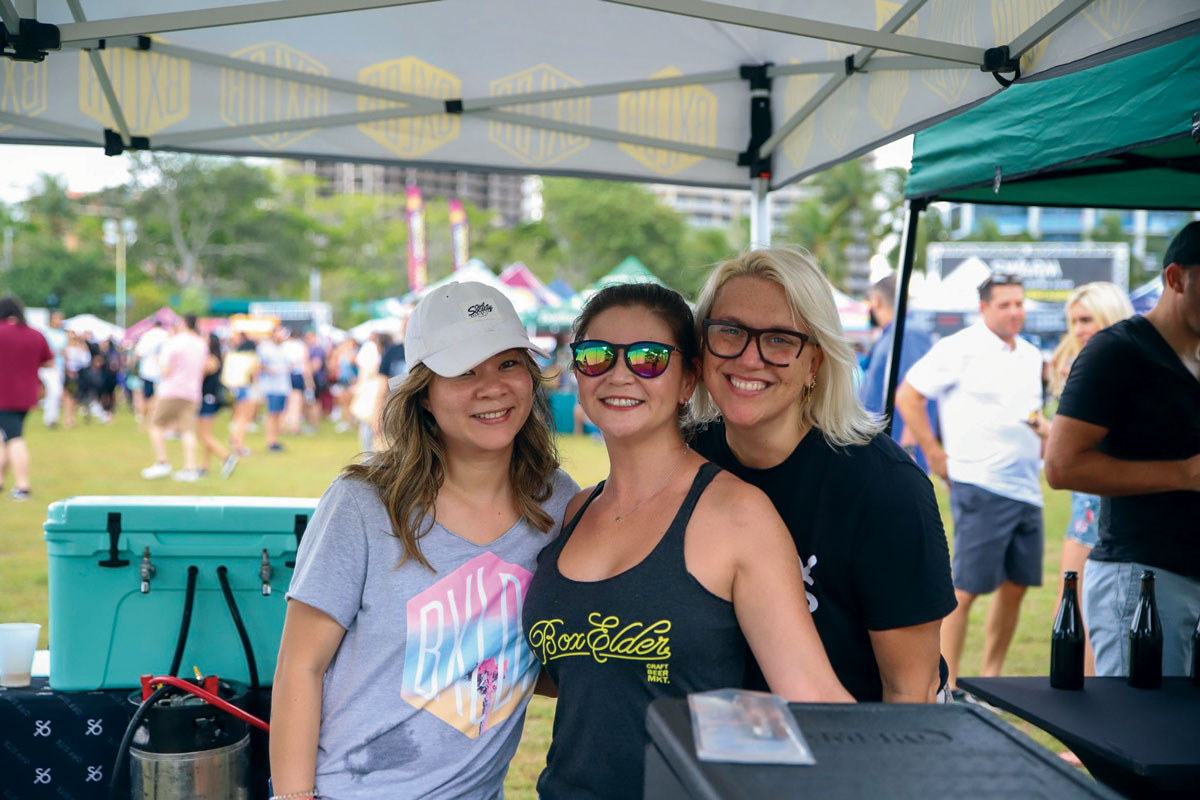10 Years of Craft Beer
Local Beer
In 2010, South Florida had a couple of local beers, but no local breweries. You might find Native Lager, Holy Mackerel or Monk in the Trunk, still quality beers, but these brewers were contract brewing elsewhere. Brew pubs like Titanic, Big Bear and Brewzzi were operating, but there were no true local breweries here until Tequesta Brewing opened their doors in 2011. Today, with literally dozens in the tri-county area and hundreds in the state, every neighborhood has a brewery to call their own.
Cans
In 2002, when Oskar Blues first starting brewing quality craft beers and putting them in cans, people thought they were nuts. In 2010, the only craft beers you might find in a can here were Oskar Blues Dale’s Pale Ale (still delicious, by the way) and other Oskar Blues beers. The only acceptable packages for craft beer were bottles and kegs. Boy, have the tables turned! Canning lines have become smaller, more compact, and cans have become a choice package for many craft beer producers and consumers. At the time, Stone Brewing, Dogfish Head and Sierra Nevada all remained steadfast on the stance of “never” canning their products. I think I may even recall Stone Brewing posting an April Fool’s post of Arrogant Bastard Ale in cans because the thought of them doing something like that was foolish. Well, not only can you now find all of these breweries proudly canning their products, but you can even find Arrogant Bastard in cans, too. Back then, 22-oz and 750ml bottles were flying off the shelves. Today, they have slowed to a very niche offering in South Florida.
IPAs
In 2010, beers like 60-Minute IPA, Avery IPA and Mojo IPA were new and exciting. Hop-forward, resinous, high-alcohol beers were completely new to consumers. Since then, IPAs are still on fire, but not just your basic IPAs. In the past 10 years, variations and subcategories have been in the spotlight: White IPAs, Black IPAs, Fruit IPAs, Session IPAs, Belgian IPAs, Double/Triple IPAs, Sour IPAs, Brut IPAs, Hazy IPAs, Milkshake IPAs and now low-calorie IPAs. Certain hop varieties, like Citra, Mosaic and Amarillo, highly sought after at the time, are now commonplace as the excitement moves on to new varietals from Australia, New Zealand and crossbred varieties in the Pacific Northwest.
Beer Festivals
In 2010, there were only a few local beer festivals. By 2014, you could find a Beer Fest nearly any weekend here. Fortunately, there are still quality events that remain a great way to sample products and meet producers, including Jupiter Craft Brewers Festival/Field of Beers Jan. 24-25 (jupitercraftbrewersfestival.com), Key West Brewfest Labor Day weekend (keywestbrewfest.com), Grovetoberfest in Oct. (grovetoberfest.com) and North Miami Brew Fest in Nov. (northmiamibrewfest.com).
Beer Bars
In 2010, “craft beer” wasn’t even a well-known term – they were microbrews. As the craft beer movement took over, bars opened expressly to carry a variety of unique beers. World of Beers, Brass Taps, Yard Houses and local establishments competed for the longest beer list. Some small, niche and locally owned establishments still do a great service for the industry, but many of the chains have already closed. Within the past decade we’ve seen 6+ World of Beers open, but today only their Coconut Creek location remains. Why? Well, you can now find craft beer everywhere. Today, most bars have at least an IPA on tap plus craft beer lists and local beer offerings – not to mention local taprooms, like Laser Wolf, Box Elder, Riverside Market, Das Biergarden, to name a few. They aren’t competing over who has the most taps. They are curating a unique beer list and atmosphere.
Distributor Portfolios
In 2010, there were only two craft beer distributors here. If a bar wanted unique craft beer, they would call Microman or Fresh Beer. Since then, every distributor, including the Miller and Bud houses, offers craft beers. Anheuser Busch and Miller Coors have bought craft breweries and focused their energy on gaining access to this market. Some consumers see this as the worst thing for craft beer, but it means IPAs and more flavorful beers are more widely available. Chain restaurants and mainstream establishments who’d never work with a small distributor or care about IPAs now usually have at least one offering outside of the light lagers or imports that still dominate.
Pumpkin and Fruit Beers
In 2010, the most exciting and biggest seasonal was Pumpkinhead from Shipyard. Since then, pumpkin beers have exploded ... and faded. Folks still love the classics like Southern Tier Pumking and Dogfish Punkin’ but the shelves no longer turn completely orange in September. Ten years ago, consumers were infatuated with fruit flavors in beers, when Sea Dog Blue Paw and Magic Hat #9 reigned supreme. As craft beer has matured, so have consumers’ palates. IPAs still grow as a category, but the basic fruit beers are a little less in demand.
South Florida has come a long way in 10 years. Trends come and go, new brewers appear, new consumers turn 21 and Smirnoff Ice makes way for spiked hard seltzers. It’s hard to say what the beer scene will look like in 2030, but I look forward to spending the next 10 years sipping and exploring. Cheers to another decade and to the ever-changing world of beer.





